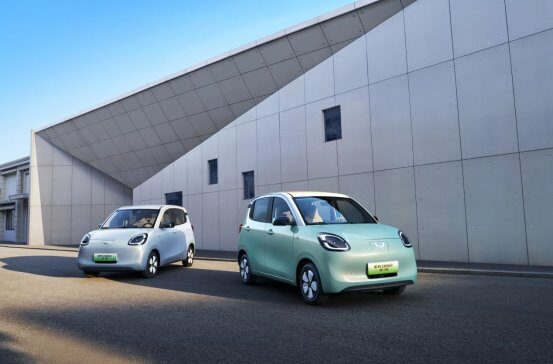A $5,500 Chinese EV vs. a $9,500 Korean EV: The Real Difference Isn’t the Price Tag.

The long-standing formula, “EVs are expensive,” is officially broken. In China, the Hongguang Mini EV is shaking up the market at around $5,500. In South Korea, Hyundai’s Casper Electric has entered the scene, available for as low as $9,500 with subsidies. This is the dawn of the EV price revolution.
At a glance, it seems like a simple price gap of about $4,000. But if you dig beneath these numbers, you’ll confront a fascinating story about differing national automotive philosophies, safety standards, and a powerful, overlooked factor that determines a car’s true value: where you live. What does this price difference truly signify? Perhaps it’s not just a price tag, but a questionnaire about our values.
$5,500 vs. $9,500: What Determined the Price?
The specifications of the two vehicles clearly illustrate how different their goals are.
- Hongguang Mini EV (~$5,500):
- Goal: To focus solely on the essence of ‘movement’.
- Specs: 215 km (134 miles) of range (CLTC standard).
- Strategy: Minimize safety and convenience features for an unbeatable price. Aims for “mobility for all.”
- Hyundai Casper Electric (Starts at ~$9,500 after subsidies):
- Goal: To meet the standard of a ‘safe compact EV’.
- Specs: 315 km (196 miles) of range, equipped with various Advanced Driver-Assistance Systems (ADAS).
- Strategy: Pass South Korea’s rigorous KNCAP safety tests and provide reliable quality and after-sales service.
Ultimately, the essence of the ~$4,000 price difference can be analyzed as the cost of safety, quality, and extended driving range. The Hongguang Mini has shifted all of these into the realm of ‘choice,’ while the Casper has included them in the realm of ‘necessity.’

The Real Variable: Do You Live in Seoul or a Rural County?
This is where the story becomes far more interesting. That ~$4,000 price gap is not absolute. It is wildly distorted by a powerful variable: local government subsidies.
- A Resident of Geochang-gun (a rural county) sees this:
- National subsidy (~
3,650)+∗∗Localsubsidy( 3,650)+∗∗Localsubsidy(6,700)** = A total discount of ~$10,350! - Final Casper Price: Approximately $9,500
- Price gap with Hongguang Mini: About $4,000
- National subsidy (~
- A Resident of Seoul (the capital city) sees this:
- National subsidy (~
3,650)+∗∗Localsubsidy( 3,650)+∗∗Localsubsidy(880)** = A total discount of ~$4,530. - Final Casper Price: Approximately $15,300
- Price gap with Hongguang Mini: A staggering $9,800
- National subsidy (~
This is a shocking reality. Depending on where you live, the cost of buying the exact same car can differ by more than $5,800. For a resident of Geochang-gun, the $4,000 difference may feel like a ‘rational investment for safety and quality.’ For a citizen of Seoul, the $9,800 difference could feel like an ‘insurmountable wall.’
So, Who Decides the ‘Value’?
This phenomenon poses an important question to us all.
But, we need to look at the other side of the coin. The idea that safety could be compromised in the name of ‘mobility democratization’ is a serious social issue. Critical analysts warn that as low-cost EVs become more widespread, the total societal cost from accidents could actually increase. In actual consumer communities, the dominant voice is, “No matter how cheap it is, I don’t want to ride in an unsafe car.”
Nevertheless, from the perspective of a Seoul citizen facing a $9,800 price difference, it’s hard to ignore the ‘overwhelming accessibility’ that the Hongguang Mini EV offers. For people who never dreamed of owning a car, this could be their one and only chance to buy their first vehicle.
In the end, the choice inevitably becomes a complex tug-of-war between the economic reality dictated by your region and the personal value you place on safety.
Conclusion: A New Standard for Choice in the Age of the Price Revolution
The $5,500 innovation and the $9,500 stability. These two cars show us that the criteria for buying an automobile have completely changed. We now live in an era where we must meticulously check not only engine specs and brand names but also the subsidy policies of where we live.
This bizarre phenomenon, where one’s location determines the practical value of a car, presents a new challenge for EV distribution policies and simultaneously offers new opportunities and dilemmas for consumers.
What is the subsidy in the city where you live? And considering that amount, would you choose to pay $4,000 more for ‘safety and reliability,’ or would you save $9,800 and invest in a ‘new possibility’? Your answer to this question will define your place in the current era of the EV revolution.
My AI Jazz Project: